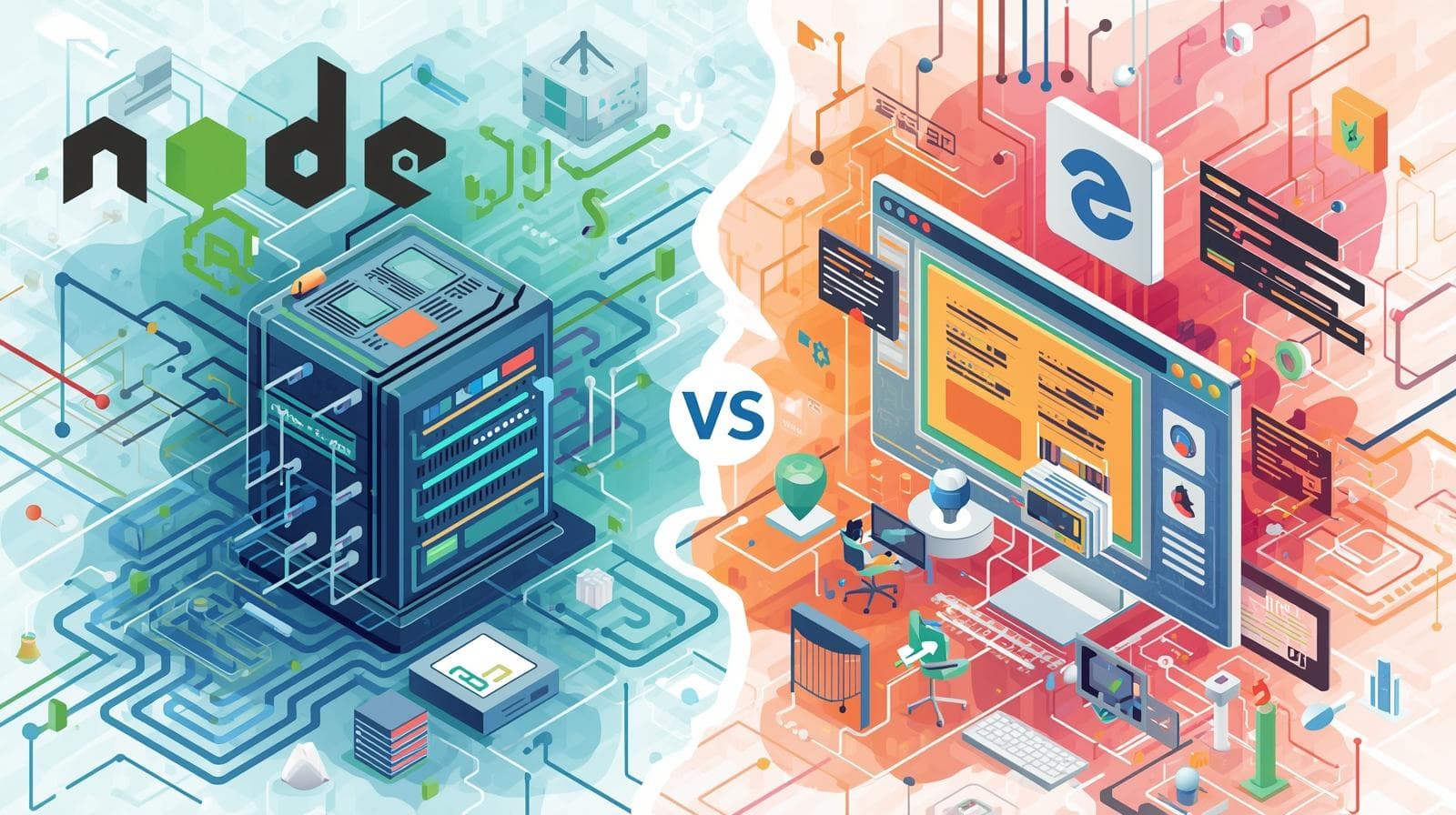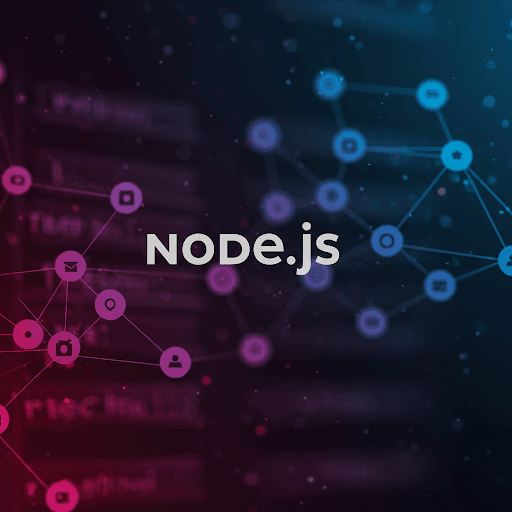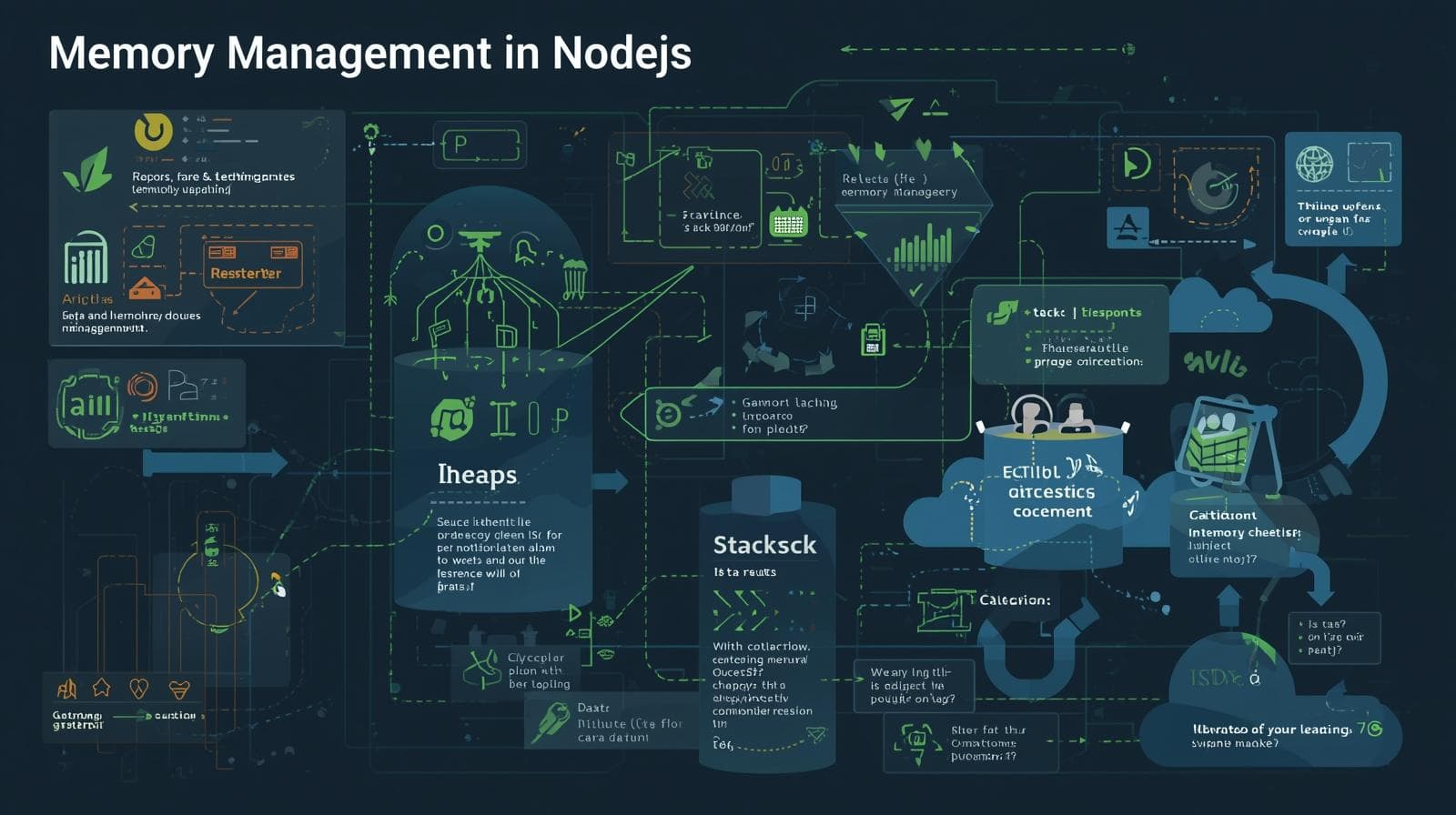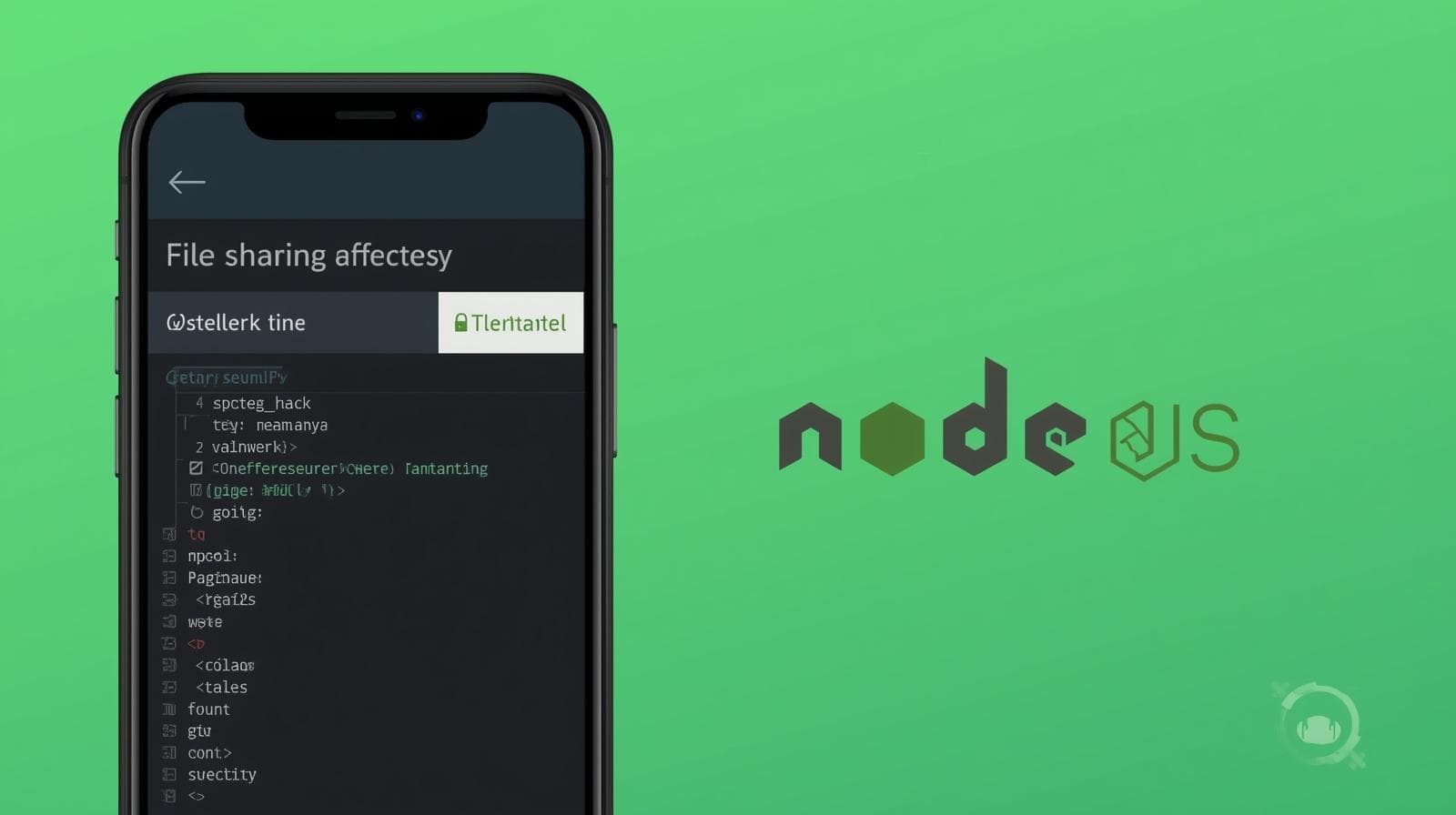Top 10 Node.js Frameworks in 2025: A Developer's Ultimate Guide
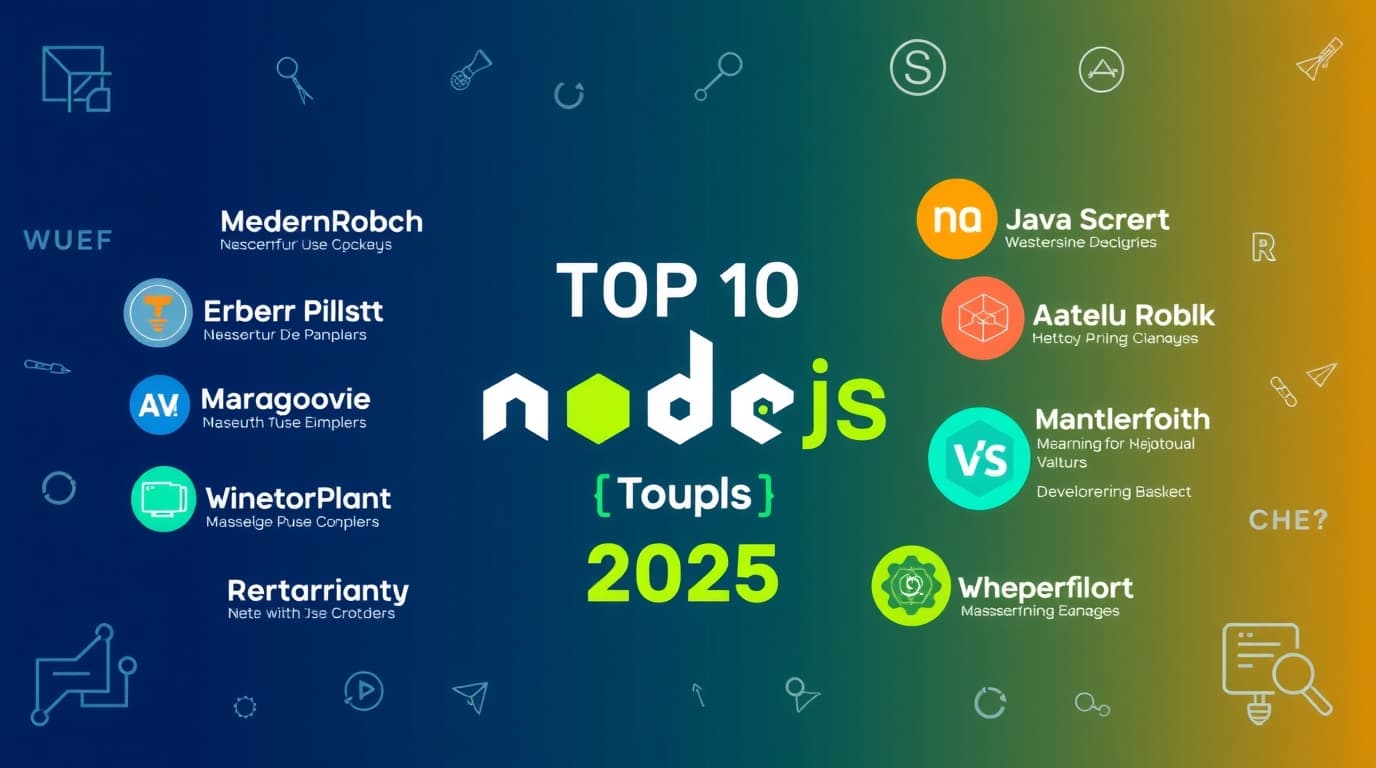
Navigating the Node.js landscape? Our in-depth 2025 guide breaks down the top 10 frameworks like Express.js, Next.js, and NestJS. Compare features, use cases, and find your perfect fit.
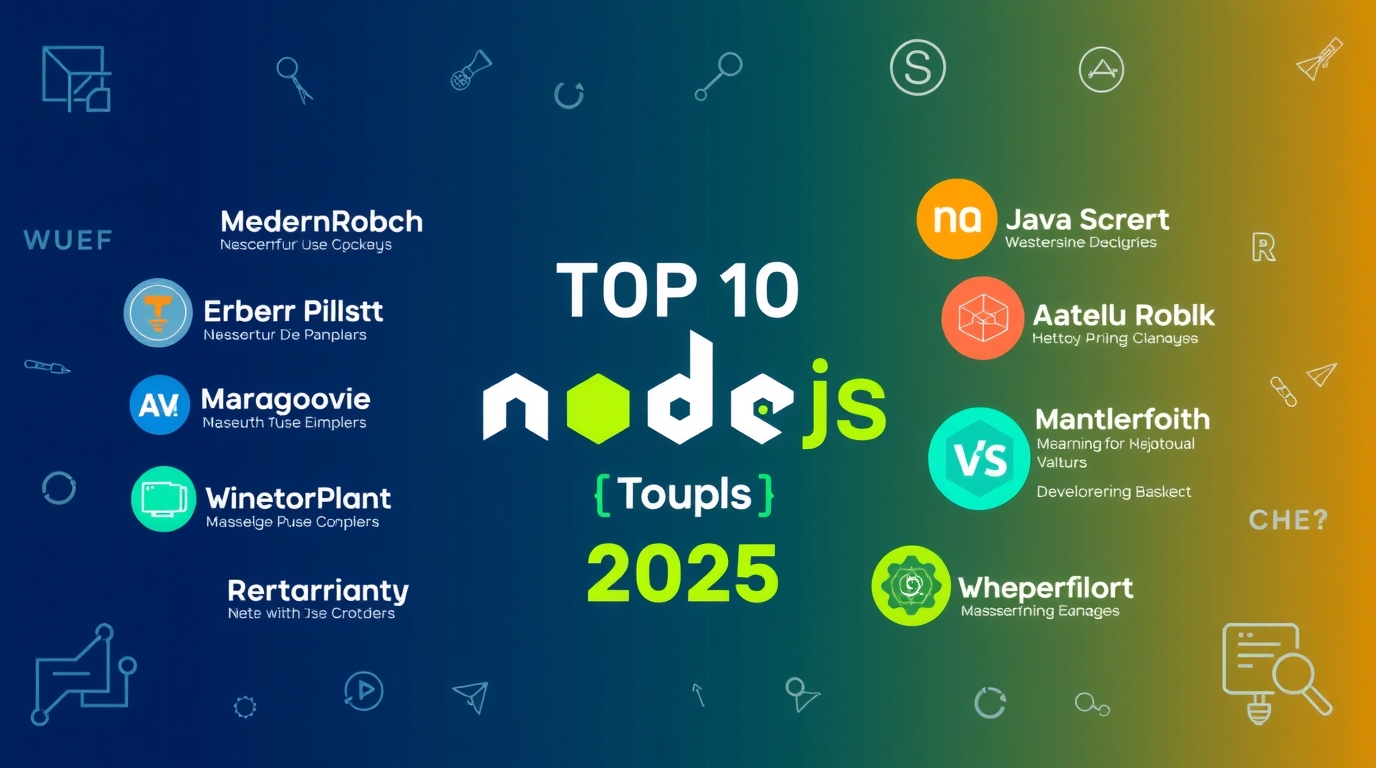
Top 10 Node.js Frameworks in 2025: A Developer's Ultimate Guide
The Top 10 Node.js Frameworks in 2025: Your Ultimate Guide to Choosing Right
Let's be honest: the world of Node.js development is exhilarating, but the sheer number of frameworks can be downright paralyzing. It feels like a new, "game-changing" tool pops up every other week. You're left wondering, "Should I stick with the classic, or is there something newer and shinier that's better for my project?"
Well, worry no more. We've cut through the noise and compiled a definitive, in-depth guide to the top 10 Node.js frameworks that are not just surviving but thriving in 2025. This isn't just a list; it's a deep dive into the philosophy, strengths, weaknesses, and perfect use cases for each one.
Whether you're a seasoned backend veteran or just starting your journey into server-side JavaScript, this guide will help you make an informed decision. And if you're looking to master these technologies professionally, to learn professional software development courses such as Python Programming, Full Stack Development, and MERN Stack, visit and enroll today at codercrafter.in.
A Quick Refresher: What Exactly is a Node.js Framework?
Before we jump in, let's get our basics straight. Node.js itself is a runtime environment that lets you execute JavaScript on the server. It's powerful, but it's also minimal. If you were to build a complex web application with raw Node.js, you'd be writing a lot of boilerplate code for things like routing, request parsing, and middleware.
A framework is a layer built on top of Node.js that provides a structured way to build your applications. It gives you a set of tools, libraries, and conventions that:
Speed up development: Less boilerplate, more features.
Enforce best practices: A good framework guides you towards a clean, maintainable code structure.
Handle common tasks: Think routing, security, database integration, and templating.
Now, let's meet the contenders.
The Top 10 Node.js Frameworks Shaping 2025
1. Express.js: The Unshakable Titan
The Gist: The minimalist, unopinionated web framework that started it all. Express is the bedrock upon which the Node.js ecosystem was built.
Deep Dive: Express.js is the "hello world" of Node.js frameworks for a reason. It doesn't force you into a specific project structure or philosophy. It provides the bare essentials to build web applications and APIs, giving you ultimate freedom. Its middleware system is legendary—a cascade of functions that have access to the request and response objects, allowing you to do anything from authentication to logging to parsing.
Best For:
Beginners learning backend development.
Building simple RESTful APIs incredibly fast.
Prototyping and MVPs (Minimum Viable Products).
Developers who want absolute control over their application's architecture.
Real-World Use Case: A small-to-medium SaaS application that needs a robust, straightforward API backend. Or, a quick prototype for a startup to demo to investors.
Code Snippet (A simple server):
javascript
const express = require('express');
const app = express();
const port = 3000;
app.get('/', (req, res) => {
res.send('Hello from Express!');
});
app.listen(port, () => {
console.log(`App listening on port ${port}`);
});2. Next.js: The Full-Stack Powerhouse
The Gist: A React framework that enables server-side rendering (SSR), static site generation (SSG), and API routes, all out-of-the-box.
Deep Dive: Next.js has transcended being just a "React framework." It's a comprehensive full-stack solution. Its core superpower is rendering. Instead of sending a blank HTML page to the browser (Client-Side Rendering - CSR), Next.js can render the page on the server and send fully-formed HTML. This is a game-changer for SEO and initial page load performance. With features like API Routes, you can even build your backend within the same Next.js project.
Best For:
SEO-critical websites (e-commerce, blogs, marketing sites).
Jamstack applications.
Complex, high-performance web applications.
Teams that want a batteries-included, opinionated framework.
Real-World Use Case: The official React documentation site (react.dev) is built with Next.js, as are huge platforms like Netflix, TikTok, and Hulu.
3. NestJS: The Enterprise-Grade Architect
The Gist: A progressive, TypeScript-first framework for building efficient, reliable, and scalable server-side applications. It heavily leverages Angular's modular architecture and dependency injection.
Deep Dive: If you love structure and TypeScript, NestJS is your soulmate. It uses decorators and modules to create a highly testable, maintainable, and scalable architecture. It's not minimalist; it's opinionated in the best way possible, guiding you towards patterns that work brilliantly in large, complex enterprise environments. It abstracts away Express (or Fastify, which you can use under the hood) to provide a consistent, robust development experience.
Best For:
Large-scale enterprise applications.
Teams with an Angular background.
Microservices architectures.
Developers who value strict typing and solid architectural patterns.
Real-World Use Case: A large financial institution building a new, complex internal banking portal with dozens of interconnected services.
Code Snippet (A basic controller):
typescript
import { Controller, Get } from '@nestjs/common';
@Controller('cats')
export class CatsController {
@Get()
findAll(): string {
return 'This action returns all cats';
}
}4. Fastify: The Speed Demon
The Gist: A web framework highly focused on providing the best developer experience with the least overhead and a powerful plugin architecture. It's all about performance.
Deep Dive: Fastify is built from the ground up to be one of the fastest web frameworks in the Node.js world. How? Through efficient code, smart schema-based validation (using JSON Schema), and a highly efficient logging library (Pino). Its performance benchmarks often leave Express in the dust, especially under high load. The plugin system is intuitive and encourages code reusability.
Best For:
High-performance, data-intensive APIs.
Real-time applications where low latency is critical.
Developers who need maximum efficiency.
Real-World Use Case: A real-time stock trading platform's backend API or a high-traffic microservice that handles millions of requests per day.
5. Socket.IO: The Real-Time Maestro
The Gist: While not a traditional MVC framework, Socket.IO is a library that enables real-time, bidirectional, and event-based communication between web clients and servers. It's the go-to for anything that needs live updates.
Deep Dive: Socket.IO works on top of the WebSocket protocol but provides crucial additional features like automatic reconnection, room management, and fallbacks to HTTP long-polling for environments where WebSockets are blocked. It consists of a server-side library (for Node.js) and a client-side library (for the browser).
Best For:
Live chat applications.
Collaborative tools (like Google Docs).
Real-time dashboards and analytics.
Multiplayer online games.
Real-World Use Case: The chat feature in apps like WhatsApp Web and Slack, or the live score updates on sports websites.
6. Koa.js: Express's Modern Sibling
The Gist: Created by the same team behind Express, Koa aims to be a smaller, more expressive, and more robust foundation for web applications and APIs. It leverages async/await to eliminate "callback hell."
Deep Dive: Koa is like a modern rewrite of Express. It's more lightweight and uses context objects (ctx) that encapsulate the request and response. By using async functions, it allows you to write cleaner, more manageable code without nested callbacks. It doesn't bundle any middleware within its core, giving you a cleaner slate to work with.
Best For:
Developers who love Express but want a more modern, promise-based workflow.
Building clean, custom APIs.
Those who want fine-grained control over their middleware stack.
7. Hono: The Edge Native Warrior
The Gist: The new kid on the block that's making waves. Hono is a small, simple, and ultrafast web framework built for the "Edge" – platforms like Cloudflare Workers, Deno, and Bun.
Deep Dive: As serverless and edge computing explode in popularity, Hono is perfectly positioned. It's incredibly fast and has an incredibly small bundle size, which is crucial for edge environments where code is executed globally. Its API is similar to Express/Koa, so the learning curve is gentle.
Best For:
Building applications for Edge platforms (Cloudflare Workers, Vercel Edge Functions).
APIs that require ultra-low latency across the globe.
Simple, fast microservices.
Real-World Use Case: An API that validates user input globally before it even reaches your origin server, or a JWT authentication middleware running at the edge.
8. Sails.js: The Rails-inspired MVC Framework
The Gist: A MVC (Model-View-Controller) framework for Node.js that is heavily inspired by Ruby on Rails. It's designed for building practical, production-ready apps with minimal fuss.
Deep Dive: Sails.js is the most "convention-over-configuration" framework on this list. It comes with a powerful ORM (Waterline) that works with any database, auto-generated REST APIs, and easy WebSocket integration. If you need to build a data-driven admin panel or a traditional web app quickly, Sails is a fantastic choice.
Best For:
Rapid development of data-heavy enterprise applications.
Developers with a Ruby on Rails background.
Projects that benefit from auto-generated REST APIs.
9. AdonisJS: The Node.js Laravel
The Gist: A full-featured, TypeScript-first MVC framework that is a direct and proud competitor to Laravel (PHP) in the Node.js world.
Deep Dive: AdonisJS is a true batteries-included framework. It has its own ORM (Lucid), a powerful CLI, a built-in authentication system, and a robust validator. It provides a cohesive and integrated experience, meaning all its parts are designed to work seamlessly together. If you want structure and features without having to piece together multiple libraries, Adonis is a top contender.
Best For:
Building monolithic, full-stack web applications.
Developers who prefer an all-in-one, integrated solution.
Teams migrating from Laravel.
10. Meteor.js: The All-in-One Platform
The Gist: An ultra-simplistic, full-stack platform for building web and mobile apps with JavaScript. It was once the "golden child" of JS frameworks and has evolved into a powerful, niche tool.
Deep Dive: Meteor's key differentiator is its tight integration between the client and server. It pioneered features like real-time data sync (when data changes in the database, all connected clients update automatically) and hot code reload. While its "magic" can be a double-edged sword, it's unparalleled for building real-time prototypes and applications with astonishing speed.
Best For:
Rapid prototyping of real-time applications.
Projects where real-time data sync is a core requirement.
Small teams or startups that need to build a product fast.
Best Practices for Choosing and Using a Framework in 2025
Define Your Project's Core Needs: Is it an API, a SSR website, or a real-time app? Let the project requirements guide your choice, not the hype.
Consider Your Team's Expertise: Introducing NestJS to a team of React beginners might slow them down. A team familiar with Angular will likely adore NestJS.
Evaluate the Ecosystem and Community: A framework is only as good as its plugins, documentation, and the community that can help you when you're stuck. Express and Next.js excel here.
Think About Performance and Scalability: For most applications, any framework will do. But if you're building the next big stock exchange, you'll need a Fastify or Hono.
Don't Over-Engineer: If you're building a simple blog API, you don't need the enterprise-grade structure of NestJS. Use the right tool for the job. Mastering this judgment is a key skill taught in our professional software development courses at codercrafter.in.
Frequently Asked Questions (FAQs)
Q1: Is Express.js still relevant in 2025?
Absolutely. While newer frameworks offer more features out-of-the-box, Express's minimalism, massive ecosystem, and flexibility ensure it remains a hugely popular and relevant choice, especially for APIs and microservices.
Q2: Next.js vs NestJS? Which one should I learn?
They solve different problems. Learn Next.js if you're focused on frontend/full-stack development and building SEO-friendly, performant web applications. Learn NestJS if you're primarily a backend developer building robust, scalable APIs and microservices.
Q3: What is the fastest Node.js framework?
As of 2025, benchmarks consistently show that Fastify and Hono are the performance leaders, especially for JSON API responses. However, raw speed isn't everything; developer productivity and project structure are often more important.
Q4: For a complete beginner, which framework should I start with?
Start with Express.js. Its minimalism forces you to understand the core concepts of Node.js, like routing and middleware, without the abstraction of a larger framework. Once you're comfortable, you can graduate to more opinionated frameworks.
Q5: How important is it to learn an edge framework like Hono?
It's becoming increasingly important. As edge computing grows, understanding how to build lightweight, fast applications for platforms like Cloudflare Workers will be a valuable skill in any developer's toolkit.
Conclusion: Your Framework, Your Future
The Node.js framework landscape in 2025 is rich, diverse, and mature. There is no single "best" framework—only the best framework for you and your project.
Need a simple, unopinionated API? Express.js or Koa.
Building an SEO-critical, full-stack React app? Next.js.
Architecting a large, enterprise-grade system? NestJS.
Demanding the ultimate performance? Fastify or Hono.
Creating a real-time experience? Socket.IO.
The most important step is to start building. Pick one that aligns with your current goal and dive in. The experience you gain will be invaluable. And if you want to fast-track your learning and gain industry-relevant skills under expert guidance, to learn professional software development courses such as Python Programming, Full Stack Development, and MERN Stack (which heavily utilizes Express.js and Next.js!), visit and enroll today at codercrafter.in.

